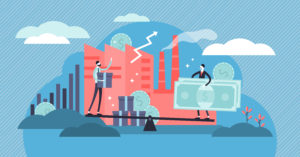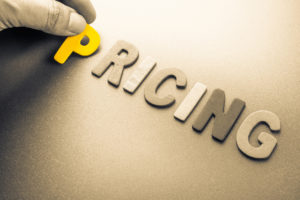
Top 10 Ways AI Drives Price Optimization in Retail

(VectorMine/Shutterstock)
There are several techniques in use in various stages if maturity in retail and e-commerce. Many different tools and techniques feed into AI powered price optimization for retailers. When used together these can drive very significant top line and bottom-line results for retailers, and allow them to be much more agile in their response to changes in market conditions like competition, costs, inventory levels, and more.
Here are the top 10 “need to know” concepts in the use of AI in price optimization for retailers.
1. Segmentation of Customers and Products
The first key in optimizing pricing is understanding how to group together like products, stores, and potentially customers. This involves what is referred to as classification algorithms which are part of most machine learning libraries these days. You will hear names like K means and X mean clustering, CART, Random Forest, etc. here. The best technique depends on the data you have available and the level of pricing and variation there. This determination is best made by a pricing scientist, which is a discipline within data science that focuses on segmentation and optimization of pricing.
2. Regression or Stochastics Modeling
Most price optimization techniques rely first on a solid segmentation model. Once this is in place, most price optimization relies on some form of regression modeling. This uses the grouping of customers and products and the distribution of prices within a given segment to determine the opportunity to change prices.
3. Elasticity
In retail and digital commerce, elasticity is a key concept in predicting the consumer’s response to a price change. Simply put, it is the change in price over the change in volume.
For example, if I increase the price by 1% and the demand drops by 1.6%, my elasticity of demand is -1.6. The calculations are simple, but this can be deceptive as you are putting a lot into a small number in terms of predicting volume response and optimizing price to achieve optimal revenue or profit. The key in this is understanding the business well and ensuring you are incorporating the right data and trends into the calculations. For example, is the weather or seasonality a factor in driving demand? What about affinity, availability, or competition? All of this will vary by category and it might be yes for some categories and no for others.
If the answer is yes and you don’t have that in your data set or your algorithms are not considering it, you can get into big trouble fast. This is another area where experienced scientists should be developing the models and ensuring that they accurately reflect the business factors that influence willingness to pay. Elasticity should be considered but not relied upon exclusively.
4. Dynamic Competitive Pricing
This is primarily a rules-based AI technique which is used to position your products vis a vis your competitors by harvesting competitive data and using it as an input into your pricing algorithms. Typically the positioning will depend on some classification of products into key value items or key value categories which will be treated differently than products or categories where people are less price sensitive. You can use velocity and elasticity to categorize products into these buckets and rules on how you want to position your products. You need to have guardrails like margin floors or other safety stops here in order to avoid a positively reinforced feedback loop that can cause algorithm based price increase or decrease.
5. Test and Learn
Sometimes you do not have sufficient variation of pricing or promotions in your historical data to base anything off of. In this case, if you have sufficiently high transaction volumes and fine-grained control over pricing, you can organize A/B or multivariate testing that can be used to optimize pricing. This can also be dangerous if not closely managed by experience people and must always be revisited as behaviors can change over time. Most e-commerce shops are not capable of this without a price optimization or testing platform plugged in.
6. Cannibalization
Cannibalization refers to loss of revenue caused by pricing of like items. For example, if I price Advil too low, I will cannibalize the white label Ibuprofen brand, or vice versa. Cannibalization can impact like items in the same brand (for example different packaging sizes) or cross brands (for example Corona vs Modelo). This must be accounted for in price optimization for retailers. It is also important for CPG companies in their pricing recommendations, albeit through a different lens (brand versus category or basket optimization).
7. Market Basket Optimization
The idea of this approach is to optimize the revenue, or ideally contribution margin, for a basket of goods a customer buys rather than any one item. It works together with recommendation engines and bundling to drive increase revenue per visitor
8. Promotion Optimization
CPG companies and retailers spend billion every year on promotions but the age-old question of “which promotions drive the most lift” still haunt marketers. Multi Agent Artificial Intelligence (MAAI) can take past data and objectives and constraints and come up with recommendations on promotions to optimally allocate this budget to drive the “biggest bang for the buck” by doubling down on what works and not running the promotions with negative ROI.
9. Recommendation Engines
Made famous by Netflix and Amazon, the idea here is to use data, segmentation to determine what items similar customers have purchased in the past based on what is in the cart or what has been viewed, make these recommendations and possibly promotions as part of the purchase process. This science and AI approach can be augmented with rules like “if you buy Shampoo, recommend Y Conditioner.”
10. OCR, NLP
Data to feed optimization and recommendation AI can be a challenge, as these depend on different attributes of customers, products, and transactions. Computer Vision, Optical Character Recognition, and Natural Language Processing can be used enhance data like product taxonomy, customer data, scan data, etc. that can make AI more efficient and effective.
About the author: About the author: Gabriel Smith is the Chief Evangelist and Vice President of Innovation at Pricefx and has 19 years of experience in quote to cash, CPQ, pricing, promotions, consulting, product management, sales, and general management.
Related Items:
The New Omnichannel Imperative: AI to the Rescue
Digital to Profit: When AI and Machine Learning Meet Pricing
































